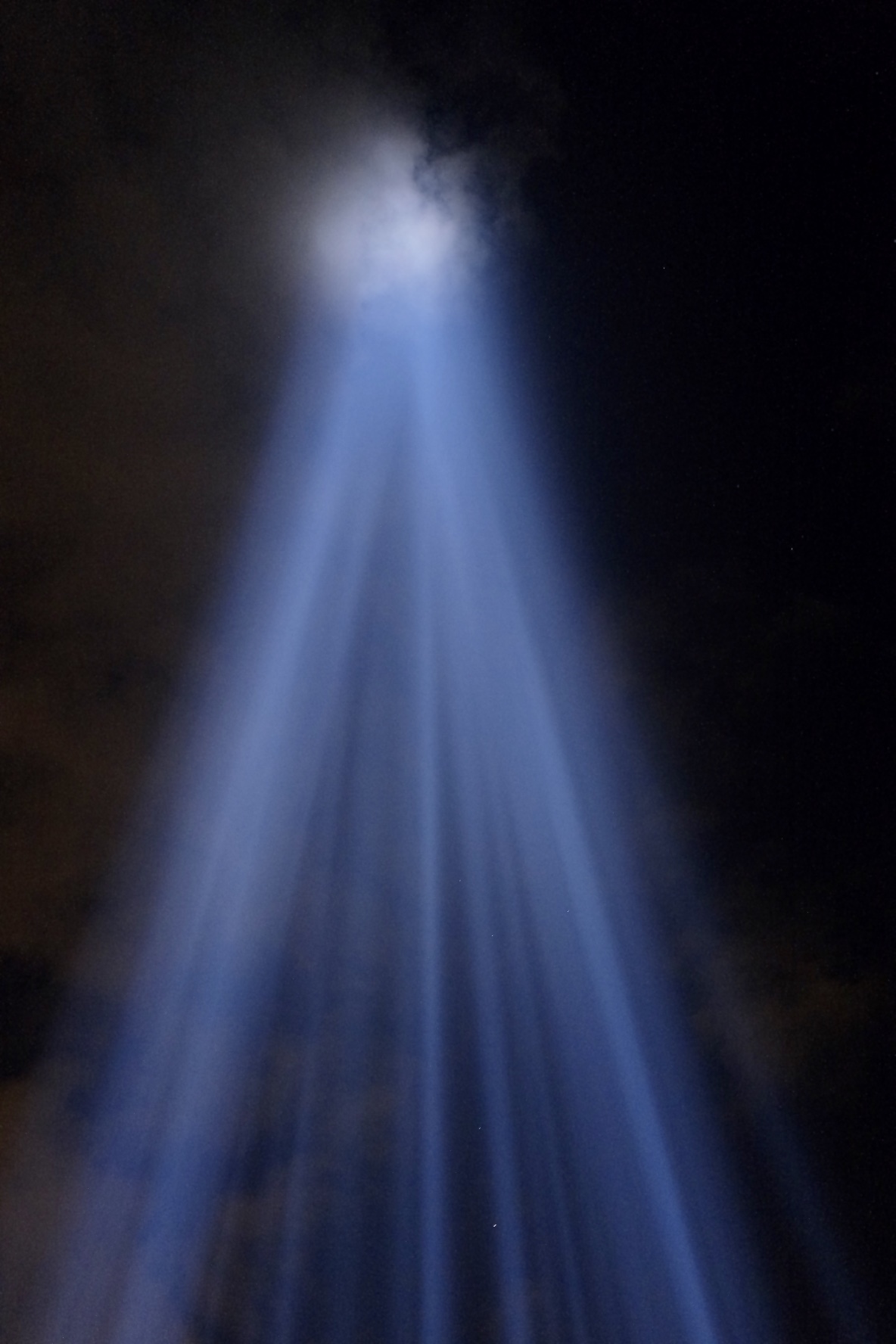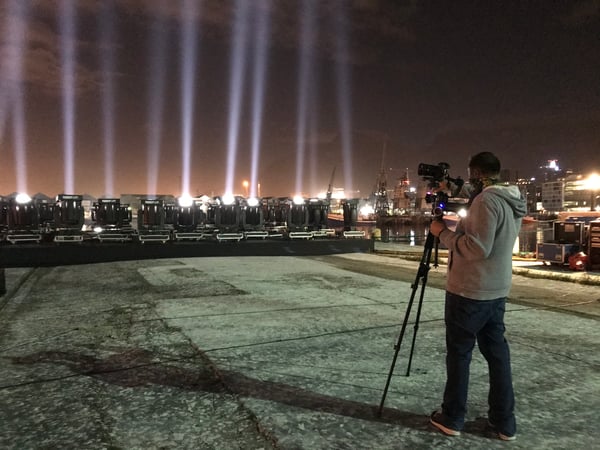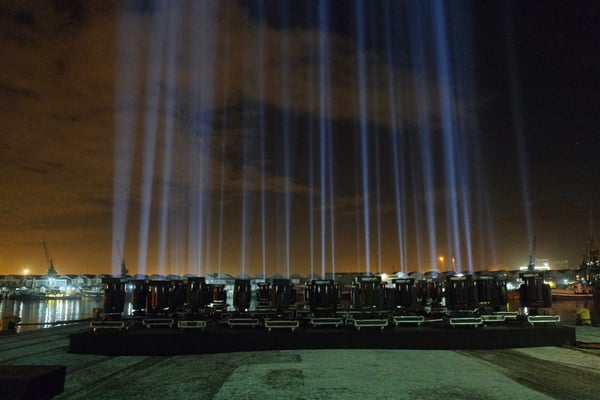
Our social media coordinator Stephan McCabe caught up with Gaston Roulstone, lecturer at Academy of Sound Engineering Cape Town, after his participation in the Beam of Hope project in Cape Town to find out what this was all about.
Here is what he said:
Stephan McCabe (SM): How is it that you got involved with this?
Gaston Roulstone (GR): I was contacted by authentic pictures producer Sharon Pearlson, who was looking for a cinematographer to film at the V&A for two days over the new year. The V&A Waterfront has a 30-year history of fireworks displays celebrating the new year but due to COVID-19 they were planning something different.
After meeting with the producer and director I was updated about the concept which was set to be the first of its kind in South Africa called the Beam of Hope. This year the V&A festive display would be replaced by a light display consisting of 36 vertical beams which would form a single large beam. This was called the beam of Hope and it was a tribute of light symbolizing lives that had been lost and all who had been affected adversely by the pandemic.
SM: So what is the background here?
GR: I was asked to film the setup and behind the scene's video, which was taking place the day before the main event on Dock 2. As I had not had much opportunity to set up my camera equipment and film during 2020 I felt this was a good opportunity to dust off the rust as a lecturer I spend a lot of time teaching the 3rd year post elective students how to film the various production days and LAMB event. It's extremely important to keep active with professional development and this is encouraged by the college to ensure the lecturers stay active and remain current in an ever-changing industry such as ours.

SM: What challenges did you face?
GR: Filming any behind the scenes is extremely challenging as it is unpredictable and typically a hive of activity, what made this even more difficult is that I had no assistant or second DP to work with not to mention the glaring midday sunlight and heat. Factor 50 sunblock did not help much and I was an exhausted red lobster by the end of day two.
Day two call time was set for a brisk 2am but fortunately, due to the lock-down curfew the V&A generously accommodated the film crew by putting us up in one of its luxurious hotels making it easy to get some B-roll of the rather empty and eerie Waterfront which is normally a buzz of activity. As the Director wanted to create an emotional feeling throughout the video a majority of the footage being filmed needed to be at high frame rates. When filming slow-motion at night a technical consideration is the frame rate frequency to avoid light flicker.
As South Africa's electrical frequency rate is 50Hz it's best to film in the 25Fps as the base frame rate with high frame rates at 50 and 100Fps. Filming in the dark is difficult at high frame rates as the shutter speed needing to be at double the frame rate this means running higher ISO and fast lenses. Making use of a Zihyun Lab 3 Gimbal allowed for nice smooth and dynamic shots.
Capturing the beams was a dynamic balancing act as the bright lights can easily be overexposed but they need to be grounded in the location which is completely dark with a haze of ambient light coming from the various harbour and ship lighting. The lights set up and alignment of the 36 searchlights was the first step for the lighting crew before they were able to start testing the beam. I was limited with the number of times the full-beam could be turned on as this was the testing phase and the team did not want too many residences seeing the beam.

SM: Any final comments?
GR: I was grateful and honoured to be asked to film such a historic and positive event to end off a year that has been difficult for all South African's. The Beam of Hope was switched on at 12am of News Year's day and ran until the 6th January being turned on at 9pm which was visible from as far as Simons Town and Melkbos!

